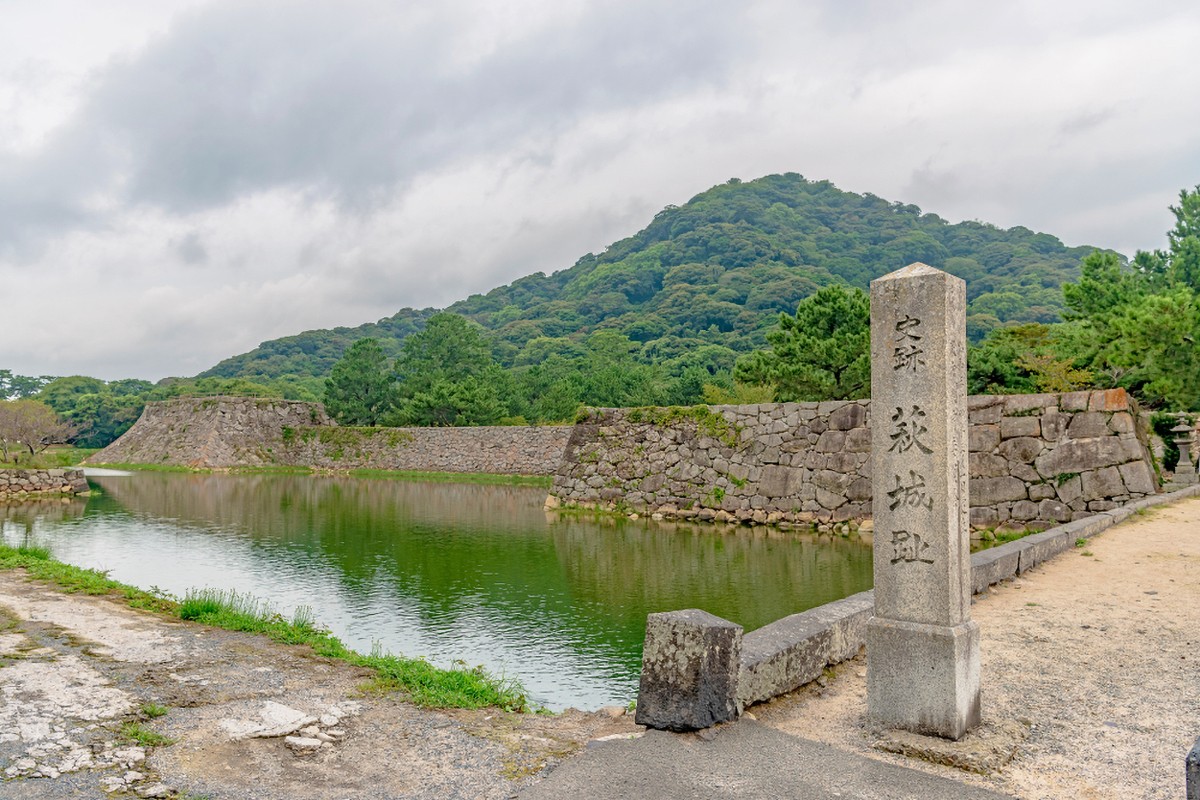
Hagi Castle was built in the Edo period for Feudal Lord Chōshū and has existed as a symbol of the area even after it was deconstructed. Furthermore, the ruins and the castle town is one of a compilation of assets that have been registered as World Heritage Sites, which include “Meiji Japan Industrial Revolution Heritage Steelmaking, Iron Manufacturing, Shipbuilding, Coal Industry.” We will introduce things to see here at Hagi Castle.
Hagi Ruins / The Famous Sakura Spot that Quietly Watches Over Hagi Castle Town.
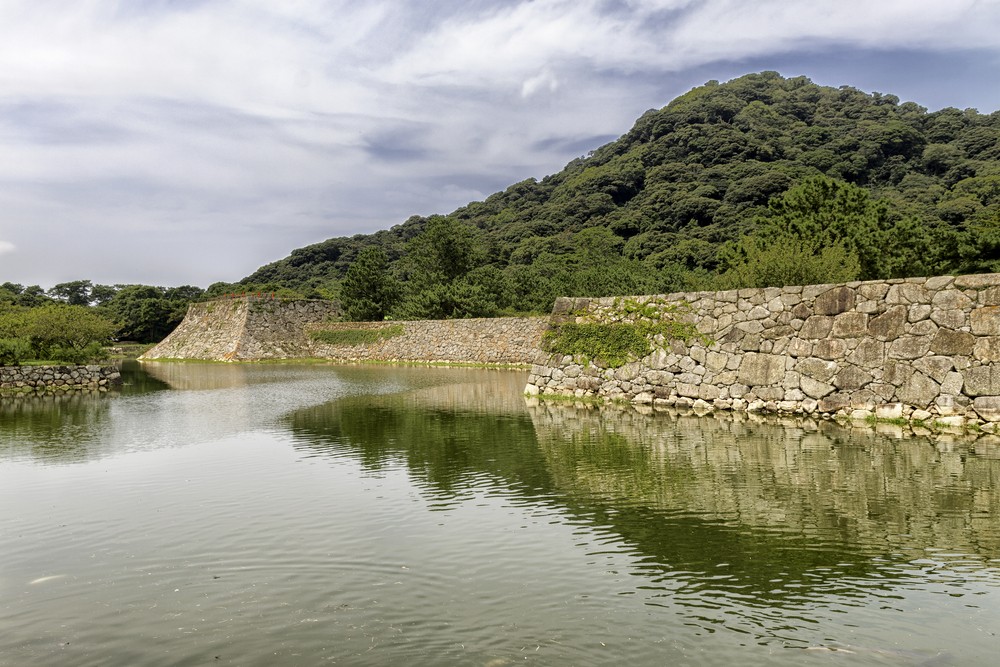
Chōshū’s Hagi Castle was constructed at the base of Mt Shizuki with Honmaru and Ninomaru walls, Yamajiro (mountain castle) at the top of the mountain, Hirajiro (flatland castle) with Sannomaru walls, Until the move to Yamaguchi Castle and the Meiji government castle deconstruction order when it was destroyed, the castle was a place where Feudal Lords stayed. Photos of the castle at that time still exist. It is famous as a place where 600 Yoshino cherry trees bloom.
Honjou ruins of Sakai Castle being maintained as Shizuki Park
The Currently Existing Hagi Castle Wall

Some piled up stones from the previously existing castle wall “Honmaru” still remain. It is a stone wall that allows you to feel that a 5 layered castle keep once existed. At night, the castle keep ruins are lit up and reflect beautifully in the moat.
Shizukiyama Shrine, the place that enshrines the Mori Clan Feudal Lord, the owner of Hagi Castle
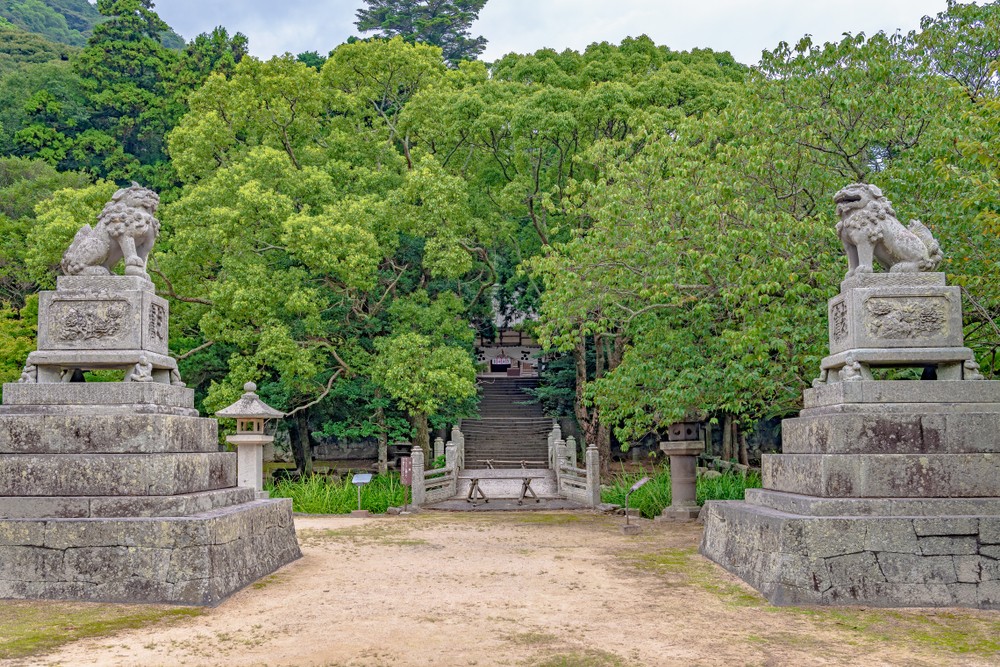
Shizukiyama shrine in the Hagi Castle Honmaru Ruins is a shrine that enshrines the historical Hagi-Han Feudal Lord. The shrine path there is a tree with a type of cherry blossom called Green Yoshino. This cherry blossom is a rare species only found in Hagi, and has been designated a prefectural natural monument. We recommend visiting Hagi in the spring when the blossoms bloom to see the cherry blossoms that cannot be seen anywhere in the world except Hagi.
Hagi Castle The Dismantling and Reconstruction of the Remains of Honmaru Ruins
The Banseibashi bridge that hangs over the pond in front of the Shizukiyama Shrine in Hagi Castle Honmaru ruins was one that was relocated from Meirinkan, a Choshu Clan school. Taikobashi bridge that was made of this stone is designated a Tangible Cultural Property of Sakai City. The tea room “Hananoechate”, that was in Sannomaru, is one of the remains that was relocated to the Honmaru ruins. This is where the 13th Feudal Lord discussed the country with his vassals at the end of the Edo period. The tea house is also a city-designated Tangible Cultural Property.
Ninomaru wall that was built to surround Mt Shizuki and Hagi Castle’s Honmaru Wall
Ninomaru has shrines, temples, and 12 Yagura. Also, there are walls and fences, various gates such the outside gate, the inner gate and Otemon which is the main gate, but the only gate that exists currently is the stone wall.
The Residential Area of Hagi Castle’s Senior Statesman ・Sannomaru
Hagi Castle Owner Clan ・Asa Mori Clan’s Hagi Mansion
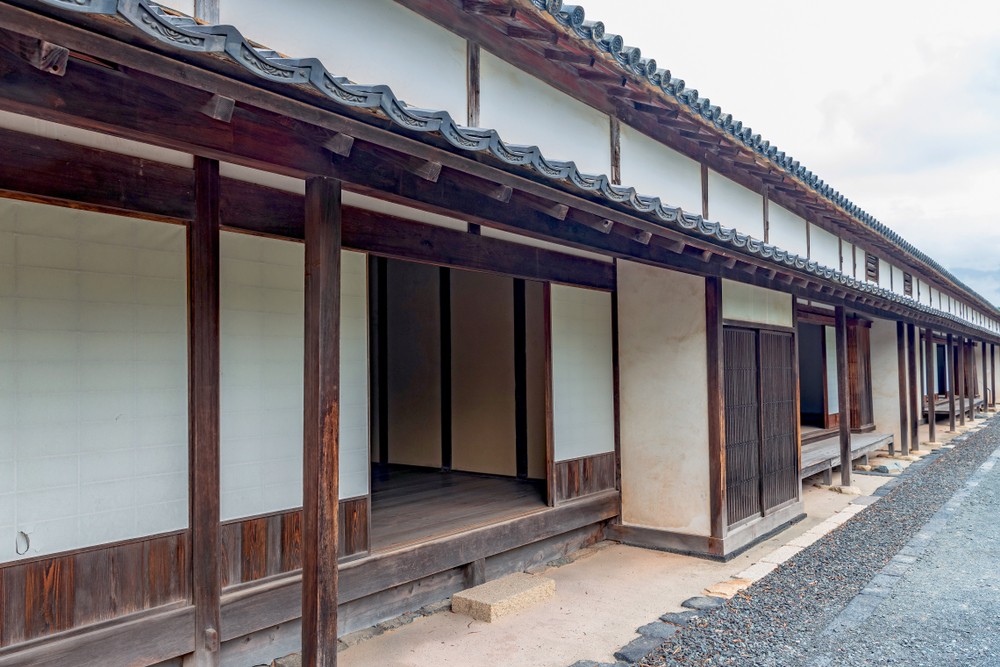
Asa Mori Clan Hagi Residence is one of the Mori Clan, Asa Mori’s mansion. It is 51.4m wide and boasts the largest area of any Samurai residence in Hagi. It was originally a much larger mansion including the main building, but it was mostly removed during the Meiji period and the only remaining tenement house has been designated an Important a Cultural Asset. The eastern rooms in the tatami mat corridors made with high formality are said to be waiting rooms for people of high social status.
About Castle
- Constructed 1604
- Deconstructed 1874
Spot Information
- Spot name: Hagi Castle Ruins Shizuki Park / 萩城跡指月公園
- Street Address:1-1, Horiuchi, Hagi City, Yamaguchi Prefecture (zipcode 758-0057)
- Access: Tokyo Station → [Shinkansen] About 4 hours 30 minutes → Shin Yamaguchi Station → [Super Hagi go (Bus)] about 60 minutes → Sakai / Meirin Center → [Hagi Circulation Maru Bus (Western Course)] about 15 minutes → Sakai Castle Ruins / Shizuki Park Entrance Kitamon Yashiki Entrance ... 5 minutes on foot. Haneda Airport → Approximately 1 hour 35 minutes → Yamaguchi Ube Airport → [Ube Municipal Bus] Approximately 30 minutes → Shin Yamaguchi Station →→ [Super Pass (Bus)] Approximately 60 minutes → Sakai / Meirin Center → [Sakai Recycle Maru Bus (Western Course)] About 15 minutes → Ruins of Castle Castle / Shizuki Park Entrance North Gate House Entrance ... About 5 minutes on foot.
- Opening times:
[April to October] 8:00 to 18:30,
[November to February] 8:30 to 16:30,
[March] 8:30 to 18:00 - Admission fee: Adult 210yen, Primary/Junior high school students 100yen

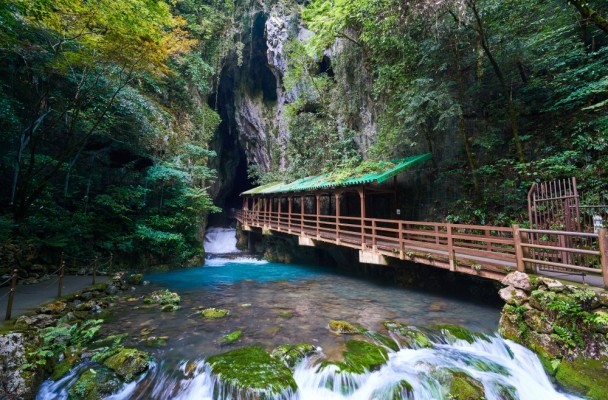
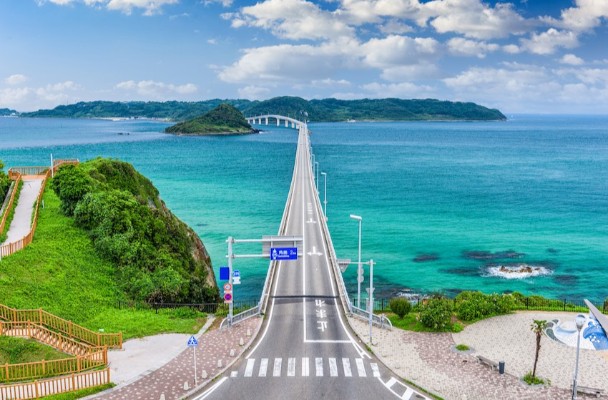
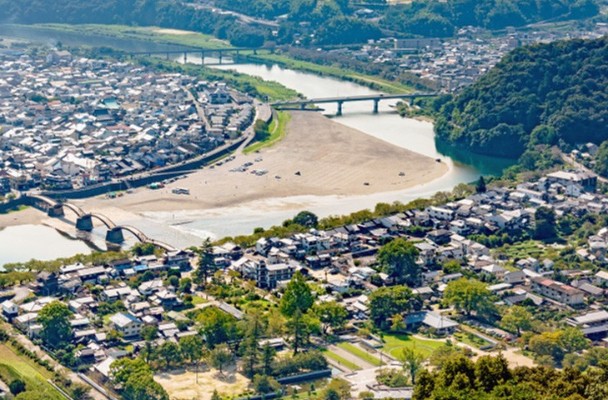

Comments